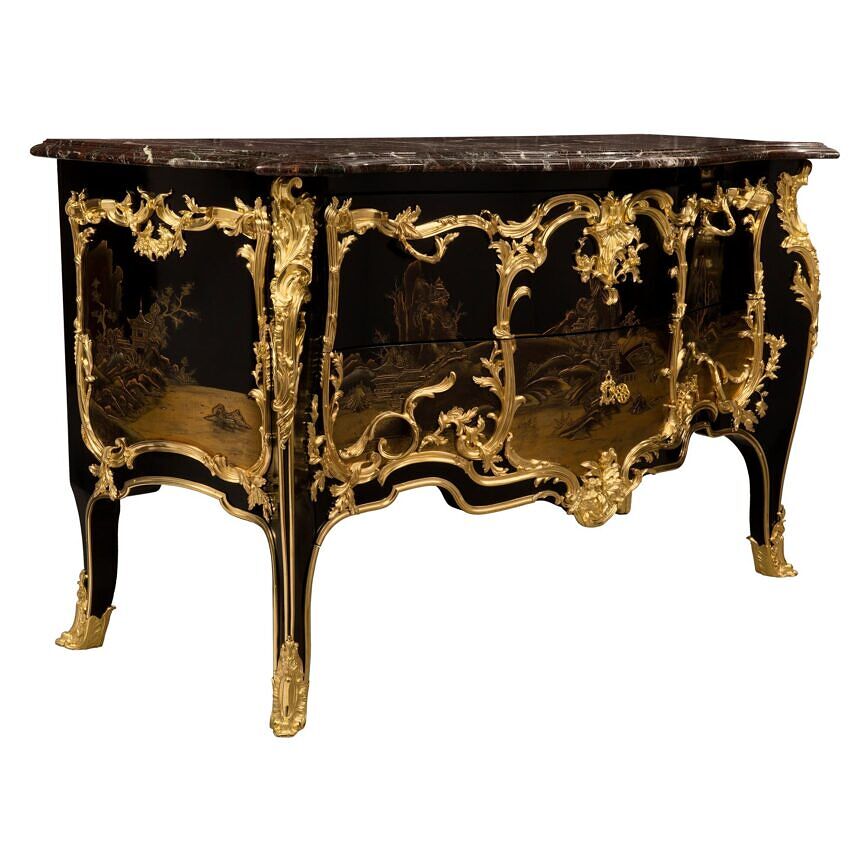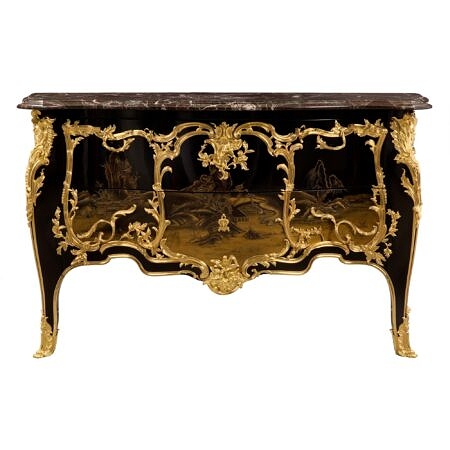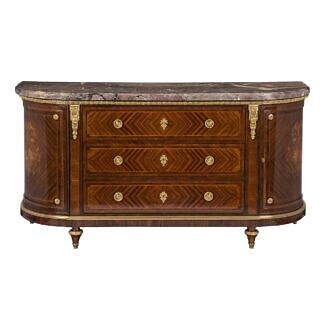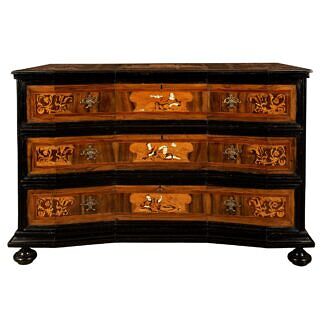A French 19th century Belle Époque period ebony, ormolu, Japanese black lacquer and Rosso Levanto marble commode, stamped by Dasson
Sorry, This item has sold
A sensational and extremely high quality French 19th century Louis XV st. Belle Époque period ebony, ormolu, Japanese black lacquer and Rosso Levanto marble two door commode, stamped by Henry Dasson. The chest is raised by impressive cabriole legs with... — Read More
A sensational and extremely high quality French 19th century Louis XV st. Belle Époque period ebony, ormolu, Japanese black lacquer and Rosso Levanto marble two door commode, stamped by Henry Dasson. The chest is raised by impressive cabriole legs with exceptional wrap around foliate sabots. A mottled ormolu fillet extends along the scalloped shaped frieze and along the sides while a fine and most unique double chute extends up to outstanding and intricately chased foliate corner mounts. At the centers are stunning Japanese black lacquer panels depicting charming scenes and foliage spread over the two drawers sans traverse (without crossbar) showcasing the cabinetmaker's high level of skill. The sides display additional Japanese black lacquer panels framed within stunning mottled ormolu fillets with richly chased luxuriant foliate movements and charming flowers. The front displays magnificent foliate ormolu movements with central water flora and floral reserves with lovely intricately detailed flowers all in a rich satin and burnished finish. Above is the original Rosso Levanto marble top with an exceptional double mottled border. — Read Less
- Item # 11001
-
H: 36.25 in L: 62 in D: 26.25 in
H: 92 cm L: 157 cm D: 67 cm
- France
- 19th Century
- Ebony, Japanese Lacquer, Marble/Stone, Ormolu
- Belle Époque Period Read More, Louis XV st. Read More
- Henry Dasson Read More
Related products
-
# 8245 - H: 35" L: 71" D: 21"
-
# 6733 - H: 37" L: 56" D: 26"



























